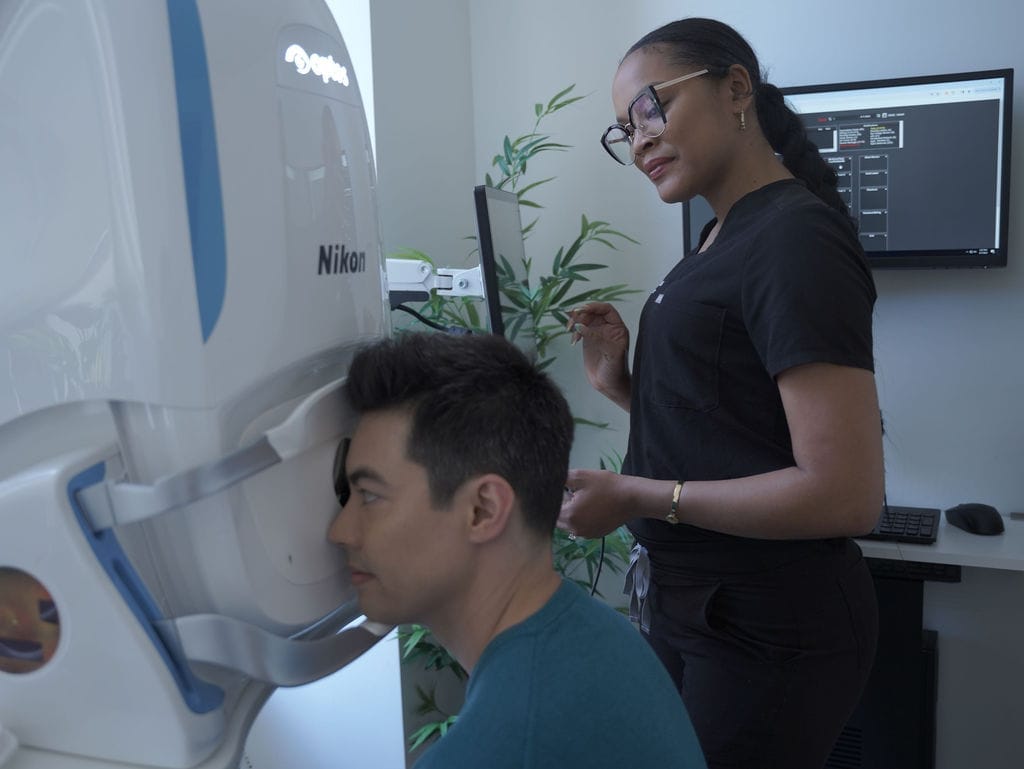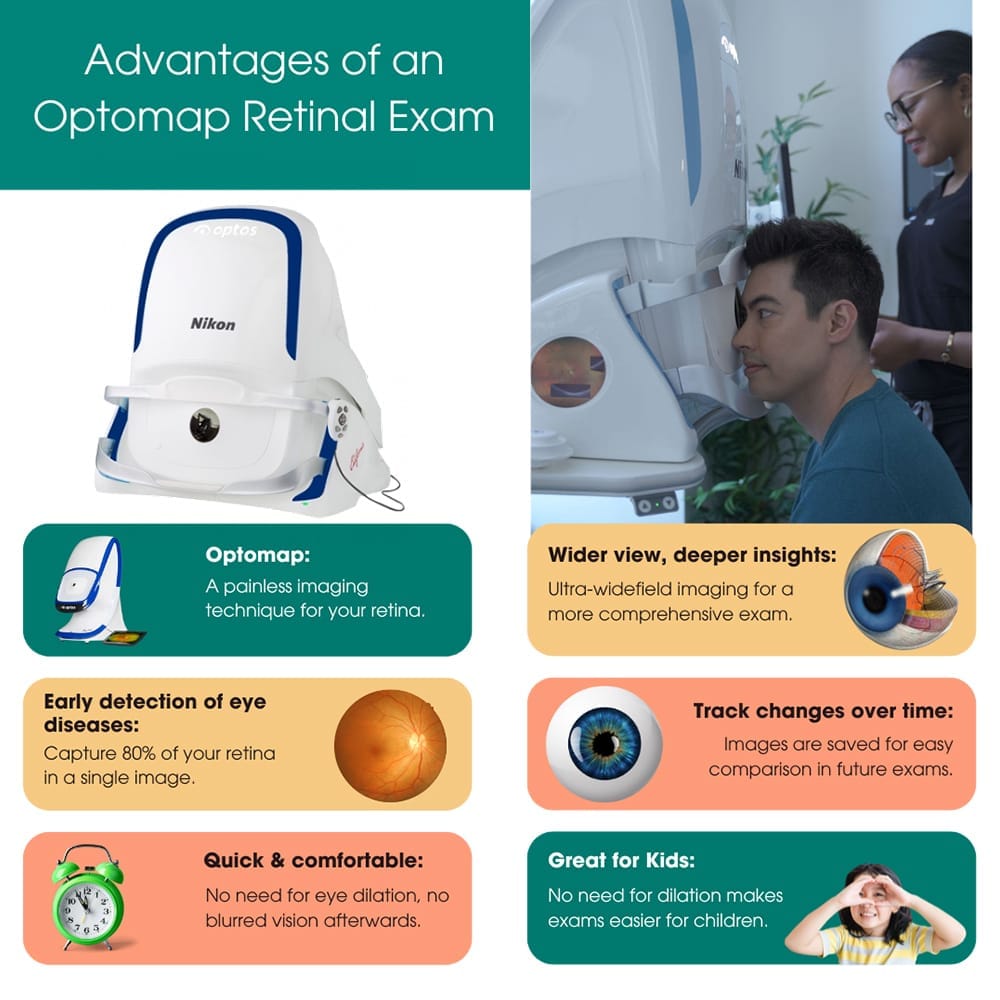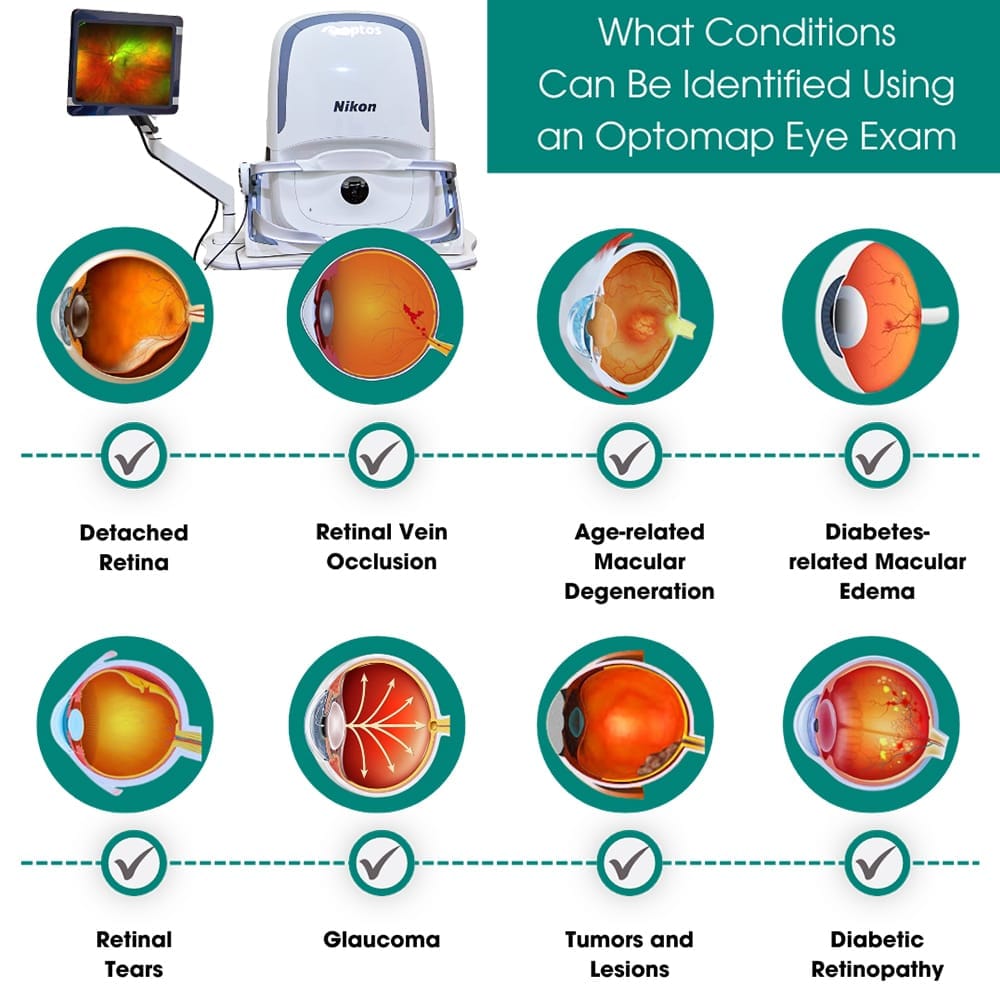 An optomap retinal exam is an eye exam your optometrist can do using a retinal imaging product to examine your retina. It makes it possible to do a thorough retinal eye exam without dilation. A dilated eye exam is a common way for the inner part of your eye to be checked for abnormalities. Some people find the drops irritating, and many people feel that having their eyes dilated during a comprehensive eye examination is an unpleasant experience since it can affect visual clarity for a few hours.
An optomap retinal exam is an eye exam your optometrist can do using a retinal imaging product to examine your retina. It makes it possible to do a thorough retinal eye exam without dilation. A dilated eye exam is a common way for the inner part of your eye to be checked for abnormalities. Some people find the drops irritating, and many people feel that having their eyes dilated during a comprehensive eye examination is an unpleasant experience since it can affect visual clarity for a few hours.
Problems with your eyes can develop without any symptoms. This is why it’s important to have the health of your eyes evaluated with regular eye exams by expert top optometrists. When you need expert eye care for routine exams, emergencies or pediatric eye care in the Manhattan area, visit Eye Physicians.
During an optomap retinal eye exam, Optos scanning laser technology is used to produce a digital image of the back part of the eye. This area includes the retina, an area within the retina called the macula, the optic nerve and other nearby structures.
To have this type of scan done, steps include:
Non-invasive, low intensity scanning lasers are used, so there’s no discomfort. The images taken during an optomap retinal eye exam are available to view immediately and you have the ability to see exactly what your eye care professional is seeing. An optomap retinal eye exam usually takes one minute or less per eye.
An optomap retinal exam is a method of retinal imaging that takes advantage of the most up-to-date technology.
A retinal exam done using this method has several advantages including:
Images taken during an optomap retinal exam are reviewed by your optometrist or ophthalmologist and can be saved as a reference when future exams are done, making it easy to identify any changes in your retina. Since eye dilation isn’t needed, this approach can be very useful in pediatric eye exams.
One disadvantage of an optomap retinal exam is that it may not be covered by insurance, so if you’re interested in this test, check with your vision insurance company to find out if it’s covered. Vision insurance sometimes covers an optomap retinal eye exam if there’s a known problem with your retinas. In some cases, if a problem is identified in this type of retinal exam, your eye doctor may recommend further testing using eye dilation to gather more information.

The retina is the layer at the back of your eyeball that plays an important role in your eyesight. When light enters your eye, it’s captured by the retina and translated into images. If your retina is damaged, your brain wouldn’t have all the information needed to create images.
A retinal eye exam is recommended for several reasons including:
A retinal exam is painless and non-invasive. Many retinal problems can be treated early when detected in an eye exam, which gives your eye doctor the ability to start treatment that may slow damage to the retina and prevent vision loss in some conditions.
Many eye diseases can progress to blindness if they’re not detected early.
An Optomap eye exam gives your Manhattan eye doctor the ability to diagnose conditions such as:
Changes in the back of the eye sometimes offer the first clue of health issues in other areas of the body that haven’t yet caused pain or vision changes. Examples include diabetes, hypertension, stroke, cardiovascular disease and some forms of cancer.

The earlier eye diseases are diagnosed, the better chance there is that they’re treatable. Regular eye exams are important for people of all ages. It’s especially important to consult an eye professional if you have eye-related symptoms that concern you, such as blurry vision, headaches, double vision, loss of peripheral vision or sensitivity to light.
A retinal exam is an important part of a comprehensive eye exam, and taking care of your eyes and your retina ensures you have good vision throughout your life. If you have any questions about an optomap retinal exam or if you’re concerned about your vision or need eye care for any member of your family, contact Eye Physicians in downtown Manhattan today.
Eye Physicians
110 Lafayette St, Suite 503
New York, NY 10013
(212) 292-4814
Entrust the care of your precious eyesight to highly skilled and experienced eye care professionals. For top-notch ophthalmologists and optometrists in Downtown Manhattan, choose Eye Physicians. Eye Physicians ensures prompt care, precise diagnosis, and personalized treatment plans.
Schedule an Appointment